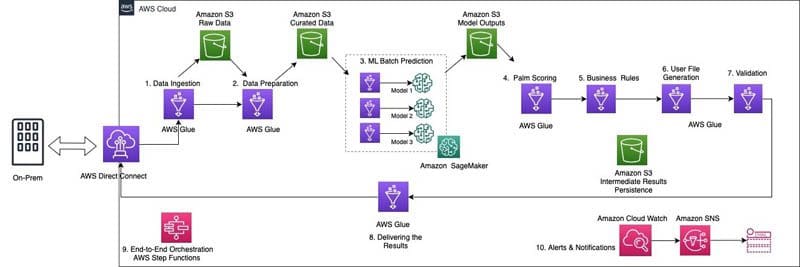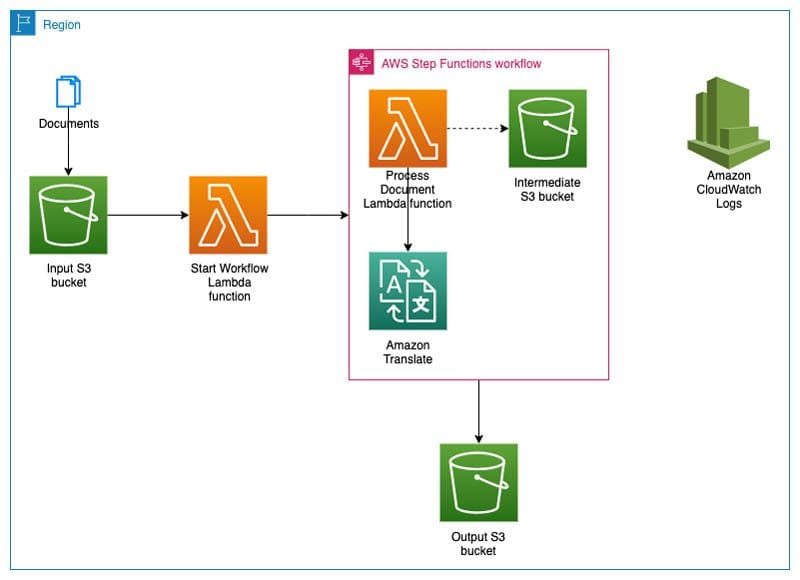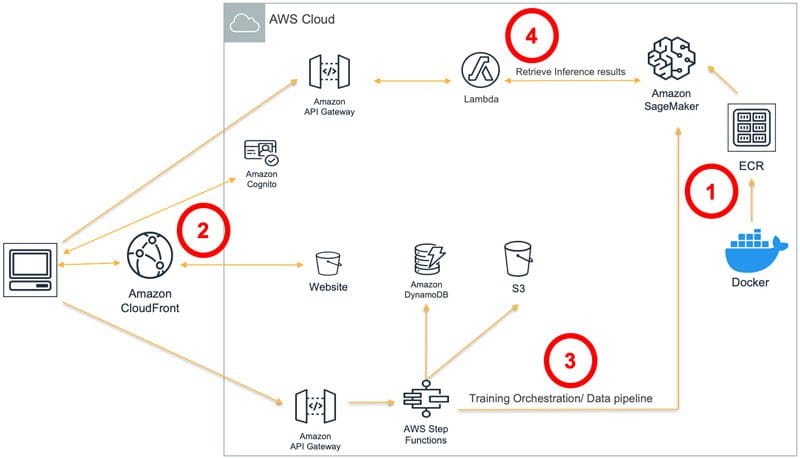Favorite Data is proliferating inside the enterprise and employees are using more applications than ever before to get their jobs done, in fact according to Okta Inc., the number of software apps deployed by large firms across all industries world-wide has increased 68%, reaching an average of 129 apps per
Read More
 Shared by AWS Machine Learning May 6, 2021
Shared by AWS Machine Learning May 6, 2021
Favorite Amazon Fraud Detector is a fully managed service that makes it easy to identify potentially fraudulent online activities, such as the creation of fake accounts or online payment fraud. Unlike general-purpose machine learning (ML) packages, Amazon Fraud Detector is designed specifically to detect fraud. Amazon Fraud Detector combines your
Read More
 Shared by AWS Machine Learning May 6, 2021
Shared by AWS Machine Learning May 6, 2021
Favorite This post is co-written with Liam Pearson, a Data Scientist at Genworth Mortgage Insurance Australia Limited. Genworth Mortgage Insurance Australia Limited is a leading provider of lenders mortgage insurance (LMI) in Australia; their shares are traded on Australian Stock Exchange as ASX: GMA. Genworth Mortgage Insurance Australia Limited is
Read More
 Shared by AWS Machine Learning May 6, 2021
Shared by AWS Machine Learning May 6, 2021
Favorite In our previous post, we described how to translate documents using the real-time translation API from Amazon Translate and AWS Lambda. However, this method may not work for files that are too large. They may take time too much time, triggering the 15-minute timeout limit of Lambda functions. One can use batch API, but this is
Read More
 Shared by AWS Machine Learning May 6, 2021
Shared by AWS Machine Learning May 6, 2021
Favorite “Our dictionary doesn’t have a word for shoe” my Uncle Allan Lena said, so when kids ask him what to call it in Yugambeh, he’ll say “jinung gulli” – a foot thing. Uncle Allan Lena is a frontline worker in the battle to reteach the Yugambeh Aboriginal language to
Read More
 Shared by Google AI Technology May 5, 2021
Shared by Google AI Technology May 5, 2021
Favorite AWS customers like Snap, Alexa, and Autodesk have been using AWS Inferentia to achieve the highest performance and lowest cost on a wide variety of machine learning (ML) deployments. Natural language processing (NLP) models are growing in popularity for real-time and offline batched use cases. Our customers deploy these
Read More
 Shared by AWS Machine Learning May 5, 2021
Shared by AWS Machine Learning May 5, 2021
Favorite Many companies extract data from scanned documents containing tables and forms, such as PDFs. Some examples are audit documents, tax documents, whitepapers, or customer review documents. For customer reviews, you might be extracting text such as product reviews, movie reviews, or feedback. Further understanding of the individual and overall
Read More
 Shared by AWS Machine Learning May 5, 2021
Shared by AWS Machine Learning May 5, 2021
Favorite Amazon SageMaker hyperparameter tuning provides a built-in solution for scalable training and hyperparameter optimization (HPO). However, for some applications (such as those with a preference of different HPO libraries or customized HPO features), we need custom machine learning (ML) solutions that allow retraining and HPO. This post offers a step-by-step
Read More
 Shared by AWS Machine Learning May 4, 2021
Shared by AWS Machine Learning May 4, 2021
Favorite A month ago, I opened a survey to investigate how KM has fared during the pandemic and associated recession. Here are the results. We conducted the last of our three triennial Knoco Global Surveys of Knowledge Management in 2020, and these reflect the state of KM in organisations prior
Read More
 Shared by Nick Milton May 4, 2021
Shared by Nick Milton May 4, 2021
Favorite Amazon Forecast just launched the ability to hierarchically delete resources at a parent level without having to locate the child resources. You can stay focused on building value-adding forecasting systems and not worry about trying to manage individual resources that are created in your workflow. Forecast uses machine learning
Read More
 Shared by AWS Machine Learning May 1, 2021
Shared by AWS Machine Learning May 1, 2021

![]() Shared by AWS Machine Learning May 6, 2021
Shared by AWS Machine Learning May 6, 2021








